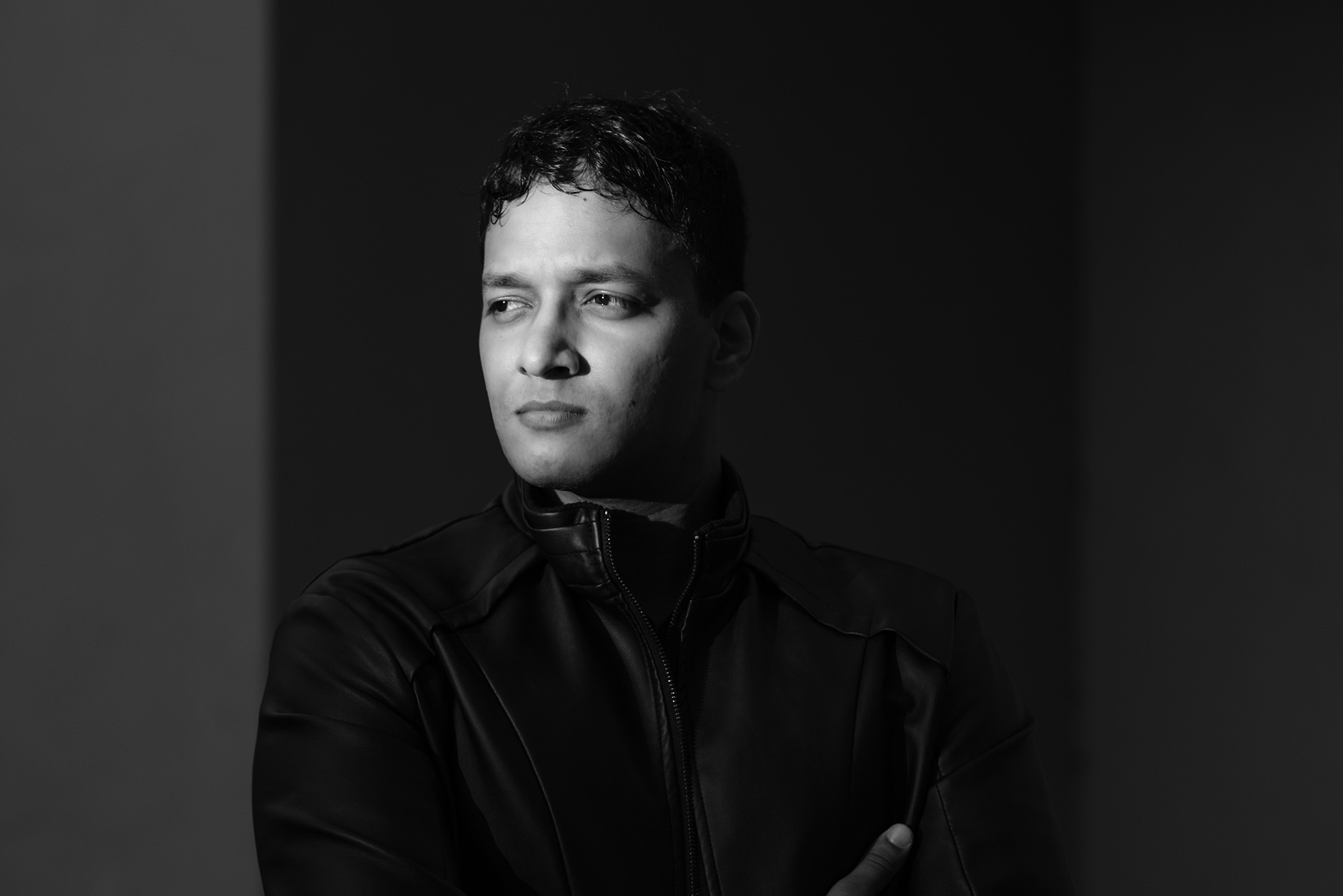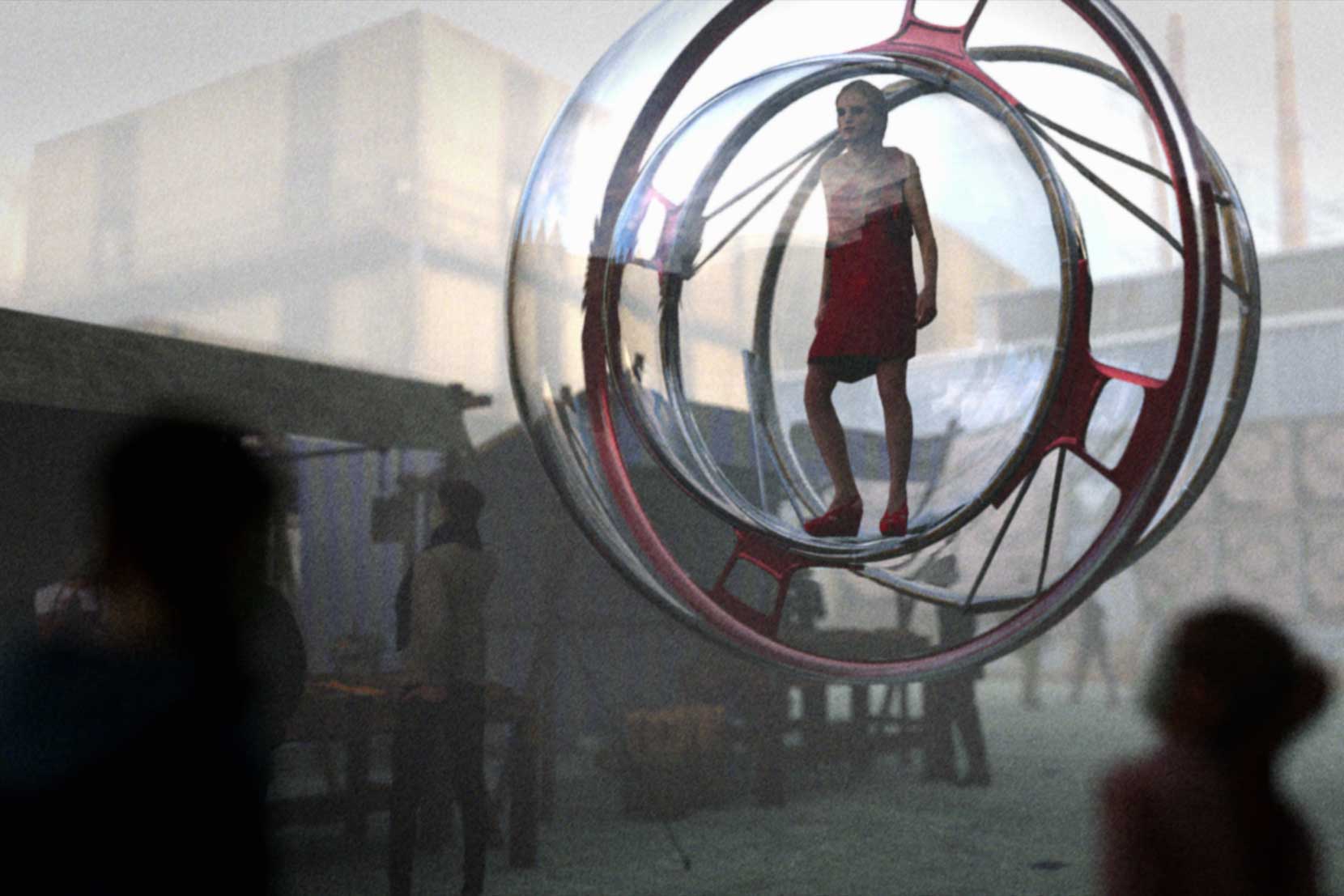The importance of the genre of speculative fiction and how it can raise awareness of real issues through storytelling
Joshua Ashish Dawson
The pandemic forced him to create his film completely in a CGI format. For this, writer and director Joshua Dawson built the entire world in Maya. The fantastic result is called Denervation and shows a dystopian future based on a Scientific American article entitled «Fake Botox: Real Threat».
The film Denervation is fully created in a CGI format - we can only guess how much time and effort it took. Was the global pandemic the reason why you decided to fully animate the film?
Yes, it was most definitely the reason.
It was weirdly surreal and almost twisted to watch all the conversations we were having about airborne outbreaks during pre-production turn into a reality a few months later in 2020. All the work we had done in 2019 and early 2020 was suddenly being critiqued in real time by the pandemic. The world of the film, with its similar microbiological errors and lack of regulatory structures to prevent such events from happening, became a mirror of our own. Everything we were designing and discussing, like masks and the politics of wearing them, bubble pods and social isolation, hermetically sealed environments, etc. all became part of the world’s daily conversation.

Still from Denervation
The very metaphors of the sphere and the bubble began to take on new meanings, and by the time we were ready to go into production in March, the very thing we were trying to warn against was here — only to derail our telling of the story. Almost overnight, our film transitioned from a cautionary tale to a chronicle to our time.
It’s funny because 2 years ago when we were trying to raise money to make the film, people didn’t think the story was relevant enough. But now, everyone wants to tell an outbreak story.

Still from Denervation
Just out of curiosity, how much time did it take to produce the film, to create the entire world in Maya?
We were going to use a lot of Green Screen anyway, and almost all of the sets were going to be digital. We had meticulously planned every shot of the film because we planned for it to be a one-day shoot, so we had to be absolutely certain that we were able to make the day. We had already done a rough preview of all of the shots in the film. But having that many extras in a confined soundstage when we weren’t really sure what the full impact of the virus was would have been too much of a risk. My producers, Ian McClellan and Ashton Rae, strongly advised against it, as this was still at the phase of the pandemic where we were obsessively wiping down surfaces.
«The case count in Los Angeles was getting worse, so I thought it might be a good opportunity to test out digital human-rendering softwares.»
So after lockdown, we decided to front-end the CGI work that we wanted to do in the post-production process. Where we decided to fully flesh out the articulation of the world and were even considering virtual production. But by that time it was much later in the year, and around October and November, it looked like the case count in Los Angeles was getting worse, so I thought it might be a good opportunity to test out digital human-rendering softwares. I had no intention of delaying the project any further – I was ready to start working on new projects – so this was a good way to build my skill set and grow as an artist.
I used the low poly previz model I had made to further flesh out the plaza space by replacing the block models with extruded image textures. My cinematographer Ashton and I went back into the 3D model to reframe our shots and discuss digital lighting setups.
I started in mid-April 2020 and finished in December 2020, primarily working on the film over weekends and in the evenings after my day job. This part took a lot of effort, since it was done all alone, but some strong coffee and a good podcast or audiobook makes the process a lot smoother.


Making Of Denervation
What role does your architectural background play in the filmmaking process and how does that reflect in the film?
On a fundamental level, my architecture training was predominantly focused on ‘critical regionalism,’ wherein you study and understand the site, its surrounding context, local materials, weather systems, its history and the ecosystem it exists within with an extreme rigor — to the point where the building almost organically designs itself. You’ve established a framework of parameters and conditions that determine and influence every design decision; nothing is arbitrary. You would think that this is the standard for how architects approach any and every building but you would be surprised.
Similarly, when telling a story, the ecosystem I build for my storyworld is completely thought through and so holistically built that the story almost tells itself. The plot points in the story structure are akin to a building’s design moves. Which is why I always like to say that becoming a better filmmaker makes you a better architect and vice versa.
«The breakdown of a screenplay is very similar to outlining a set of construction documents.»
Secondly, when it comes to the process of making the film itself, it is as hard to differentiate between the site and set as between a floor plan and screenplay. The breakdown of a screenplay is very similar to outlining a set of construction documents. Scripts break into sequences – scenes – shots and every shot cohesively pulls together the expertise of multiple departments to craft the mise en scene. In architecture, floor plans break into wall sections, which break into detail call-outs where multiple departments coordinate its assembly. This idea of a part corresponding to the whole is a shared language between the two.

Joshua Dawson
What was particularly important to you when modelling the urban environment of Denervation?
I was trained in World Building by famed production designer Alex McDowell, who said that “every story ever told exists at the center of the relationship between the world, its inhabitants, and our point of view. The designer is responsible for developing a narrative space at the center of this triangular tension.”
In some ways, Denervation was really an experiment to test if I was able to use the plaza space of the narrative as a microcosm of the larger world’s conflict. The plaza was meant to pack and encompass all of the subtle nuances of the world that exists beyond what is in the frame, while keeping the narrative within its confines.
It was essential that the film only alludes to the spa without fully revealing it. The most interesting story that you can draw from any world is from the perspective of those most affected by the repercussions of our actions, in this case, the industrial town’s residents.
So the entire world was built by playing out a day in their lives, and the influence that these characters exert on the space around them informed the design of the plaza.


Stills from Denervation
What aesthetic did you want to give the film? How did you achieve that? Did you have to accept certain limitations in certain aspects?
I didn’t want to define an aesthetic too early on, with the danger that it would force the film to conform to a visual idea that didn’t fit the story. I was open to having the aesthetic evolve as we progressed through the project. Saori Mitome, my costume designer, and Ashton, my cinematographer, were really keen on finding the look and feel through the course of making it, and I found that to be very liberating. We wanted to be experimental. The sound and score and choice of voice actors all lent themselves to defining the visual aesthetic.
I aim to search for a new design language through the medium of cinema; rather than recreating a banal form of spatial representation, I want to use fiction to push the cinematic image. I think that this relationship, where narrative and built environment intermesh, has immense untapped potential for aesthetic experimentation.
We did have some visual references that persisted throughout the process, like the images from Melvin Sokolsky’s bubble series and Antonioni’s Red Desert. I kept asking myself the question – if Antonioni built a world in CGI what would that look like?
I have been told that watching the film reminds some people of games from the late 90’s and mid 2000’s, like Half Life, Portal, etc. but that was not a conscious decision.
The biggest limitation was working through the rigging of the characters and the inability to make them feel more natural… However, that was a trade-off I was willing to make to ensure I was able to complete the project.


Making Of Denervation
Do you think that interpretations in films of how the future could look like, especially in the genre of science fiction, have an influence on how cities will actually look like in the future, be it utopian or dystopian?
A younger generation of designers and storytellers, including myself, have found inspiration in a famous essay written by a technologist named Julian Bleecker on an emerging discipline called “design-fiction.” He lays out this notion that “science fiction does not merely anticipate but actively shapes technological futures through its effect on the collective imagination.”
So while film becomes an opportunity to test and prototype visions of the future, it also – more importantly – communicates that vision to a large public audience.
But in that process, the props and sets that were born of a fictional future to respond to a completely different set of conditions are plucked from their context to find utility and currency in the present-day real world. Minority Report is one of the most important and talked about examples of this concept, where the prototypes, gear and gadgets used in the film have spawned many patents and new companies.
«But in that process, the props and sets that were born of a fictional future to respond to a completely different set of conditions are plucked from their context to find utility and currency in the present-day real world.»
There’s definitely a canon of speculative architecture that’s been established by the Avant Garde paper architects of the 60’s and 70’s that began with the suspension of reality as a new form of architectural thinking. They were a breed of architectural storytellers who liberated themselves by using media beyond buildings to express radically innovative ideas. However, while you can map and chart their influence through the buildings that were designed immediately after that period, the credit was restricted to the builders and not the storyteller. There’s always been this distinction between storyteller and maker. However, with the democratization of advanced manufacturing tools and the increasing intuitiveness that’s built into visualization programs these days, we don’t really need to separate the two identities anymore.
I personally don’t believe that the narratives for the future of cities and the built environment need to be mere 2D visualizations anymore. But this concept gets a little tricky when science fiction is an active participant in shaping the built environment. The practice of architecture is very slow. It takes years for buildings to move through entitlements, permits and construction. Also, more importantly, building codes don’t adapt quickly enough to keep up with the future that they aim to regulate.
There are Fortune 500 companies being restructured and established on the principle of science fiction prototyping, where they find value in using science fiction writers as consultants to influence and chart the future of their companies.
Similarly, I think the building department in every city should hire a science fiction writer on their staff.
Is it possible to consider the genre of speculative fiction as a cautionary tale that can raise awareness of real issues to come? How does this manifest itself? How or where does this demonstrate itself?
I certainly think speculative fiction is a powerful storytelling tool for activism. I don’t think that speculative fiction is necessarily predictive, but it sheds light on our current state of affairs. It’s the art of using fiction as a vehicle to reflect on present-day structures and systems, reframing them by extrapolating alternative visions of society and challenging our willingness to bear the cost of that future.
My work demonstrates this by re-framing the built environment through storytelling, using interdisciplinary design thinking and cinematic visualization to bring to the fore the global issues facing our cities today, such as regulation (or lack thereof) in a free market, or water privatization and how that impacts equity and breeds stratification of class, etc.
The cinematic frame becomes the perfect medium to investigate, prototype, and evaluate the built environment’s impact on humanity. This combination of design and cinema can act as a powerful force for change.

Joshua Dawson



